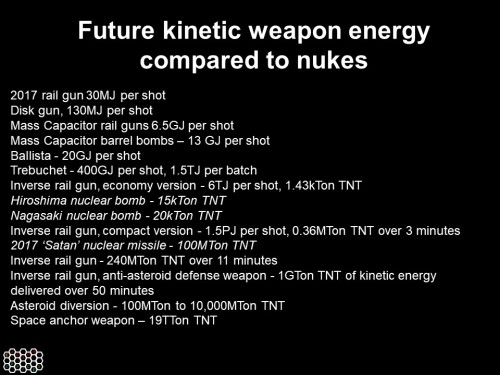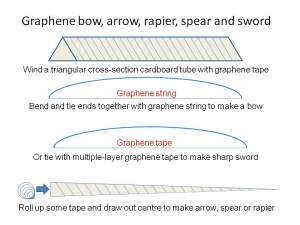The world is progressing in many ways, but tribalism isn’t going away, so new arms races in AI, drones, bio-weapons and space weapons are already under way. Forewarned is forearmed. What sort of weaponry should we expect? I’ve discussed AI and bio approaches before on other blogs, so this one looks just at kinetic weaponry using advanced materials, coupled to EM acceleration systems.
https://carbondevices.com/2017/08/31/using-inverse-rail-guns-for-assisted-space-launch/ shows a crude illustration of my invention, the inverse rail gun, which inverts the idea of using a slug on a short rail gun and uses the short rail gun to accelerate a long tape instead.

alternative view:

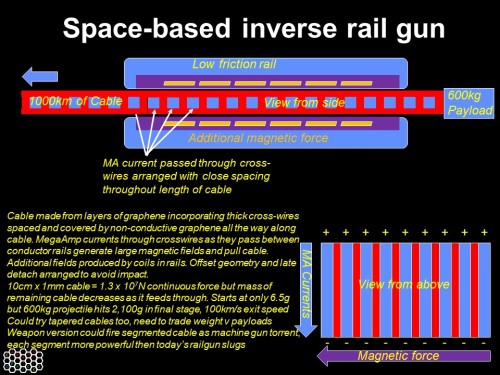
‘Compact version’ space-based inverse rail gun
Inverse rail guns could be of any size, but the mass of the tape eventually becomes a barrier to acceleration speed. That can be offset by using many ‘guns’ distributed along the tape so that each segment of tape has its own driver, at least until the tape has fully passed through that section. This is the basis of my Mars commute system, which could transport people to Mars in as little as 5 days.
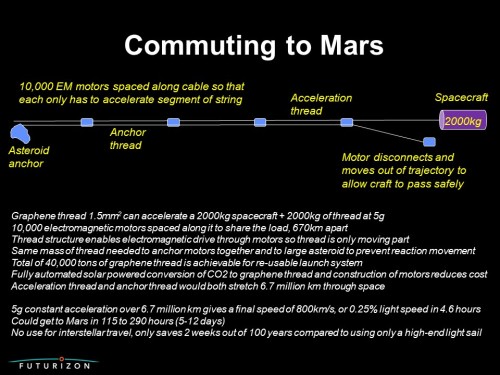
The Mars system assumed a space capsule payload of 2 tons, containing people so limited to 5g acceleration, leaving the final motor at 0.25% light speed, already enough to qualify as a super-weapon in its own right: 2000kg at 800,000m/s carries 0.64 petajoules of energy. Obviously if it were to be used as a weapon, there is no need to limit acceleration so other configurations can achieve 1.5PJ (0.25 MTon nuke equivalent) per shot at the lower end, up to 1GTon nuke equivalent at the high end, anti-asteroid device. The table here shows some of the various weapon deployments comparing them to assorted nuclear weapons. Nuclear weapons may well prove to be a 20th and early 21st century weapon type, since we won’t need them after that. Electromagnetic kinetic weapons can achieve much greater lethalities

However, these are all space-based weapons. Suitable perhaps for Trumps Space Force and thereby tempting the beginning of the next arms race among superpowers, but not much use on a ground battlefield. For that there are some much smaller scale devices that are still pretty lethal compared to what we can use today, short of nuclear escallation.
I designed a few shorter implementations of around 2km length. One I called the Ballista, essentially a 21C update on the old-fashioned siege weapon. Rather than make it too futuristic, I limited it to using today’s materials, so it could be made in the near future. It fires a 100kg projectile at 2km/s, around 200MJ, compared to 25MJ for today’s rail guns. It could easily take out any air-based platform, or by using an airborne winding system, could be aimed at ground or sea-based targets.
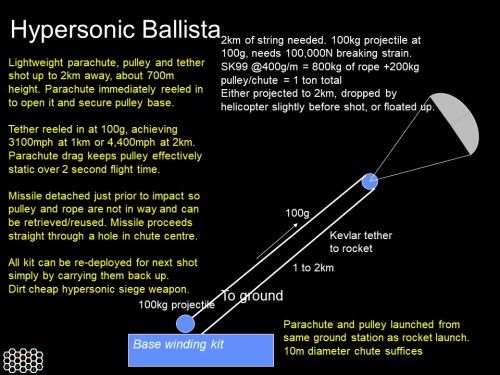
It could fire a shot like that every few minutes.
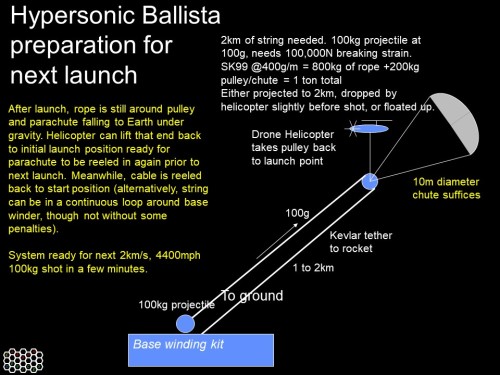
Future materials will allow far higher accelerations to deliver much higher energies.
Meanwhile, an adaptation of my Pythagoras Sling invention for military use allows a weapon similar to a trebuchet, but a 20km sized trebuchet. This would allow orbital speed projectiles, to take out satellites or ships. Here is a near-term implementation using materials already available, delivering about 400MJ onto a target:
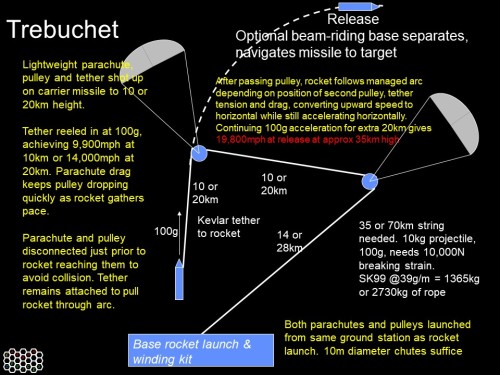
Unlike traditional trebuchets, it could fire steerable projectiles such as this beam-rider to hit a target with laser-guided precision:

Along the design path, it becomes obvious that one barrier is storing the energy required for the rail gun, and one solution to that is to use a mass capacitor, storing energy as a spinning mass instead of electrically. Electricity can be used to spin it up, and electromagnetic braking as the extraction mechanism:
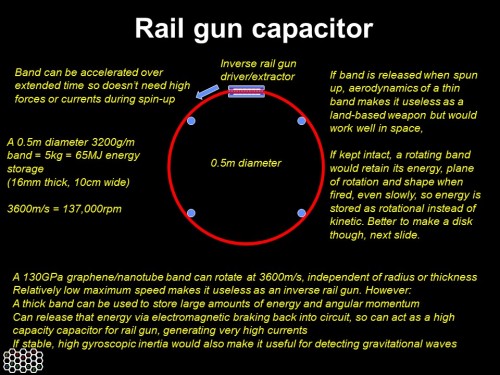
Each capacitor, even on this puny configuration, can store 65MJ. It’s obvious that with some design improvements, this could be weaponised in its own right:

Once spun up to speed, the 130MJ disk duet could be fired frisbee-like at a target, disintegrating to devastate a large area. If that isn’t enough, a stack of duets could be barreled to make a 13GJ projectile, about 500x the typical 25MJ rail gun available today, and it’s clear that carbon weapons will make future battlefields rather more dangerous.
If instead, some mass capacitor stacks are used in their initial role, to store energy for an inverse rail gun, then even with a more compromised configuration of 2GJ each, that gun could shoot projectiles with 6.5GJ energy. Fragmenting into 10,000 10g pieces at the target, each moving at 7000mph, a Vernier gun could destroy an entire battalion with each shot, ready for another shot in 5 minutes.


